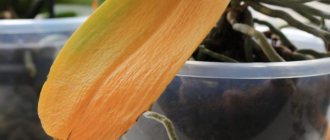Indoor violets are especially popular and loved among flower lovers:
- Many types and varieties;
- Amazing color options;
- Very compact plants allow you to have more than a dozen of them;
- Affordable prices;
- Conditions of care and maintenance are quite feasible in an apartment;
- They reproduce well and easily.
Features of caring for Saintpaulia at home
It is important to know and take into account the natural and varietal characteristics of Saintpaulia. It is not for nothing that many flower growers claim that violets are unpretentious . Compare them with other colors. Create optimal conditions. And they prove this with their beautiful collections of many blooming violets.
Care recommendations should not be ignored . And it’s also good if mistakes can be corrected without serious consequences for the plants (adjust temperature, watering, light). And they will bloom profusely again.
It is worse in cases where it is not possible, even with the efforts and measures taken, to preserve Saintpaulia. And they die. For a dead plant, it no longer matters whether it happened due to ignorance or negligence!
We will talk further about why the violet dies and what to do to prevent this from happening.
Growing problems
Beginners who start growing violets often have problems caused by improper care. The most common complaints:
- spots appeared on the leaves;
- leaves wither and dry;
- The violet root is rotting.
Spots on leaves
Why do yellow or brown spots appear on violet leaves? Most likely, the violet is exposed to direct sunlight, and the spots are sunburn. They save the violet in different ways: they stick stained glass film on the glass, shade it with translucent roller blinds, and transfer it to the windowsill of the north window. Ideally, violet loves diffused, not bright light. Spots on leaves can occur:
- due to dry (too humid) air;
- insufficient (excessive) watering;
- due to excess fertilizers, especially nitrogen;
- using cold water for irrigation.
Elite varieties of violets should be grown on a rack equipped with an artificial lighting system.
Why do leaves wither and dry?
The edges of the leaves dry out and darken for four reasons. The first reason is overflow. The second possible reason is a lack of nutrients in the soil. Reduce watering, water only when the top layer dries. If the problem is poor soil, feed with any fertilizer for ornamental plants. The third reason why the edges of the leaves may dry out is poor soil: dense, heavy, or when replanting the flower it was too compacted around the roots. The violet leaves are still drying from the draft; she categorically does not like it.
The root is rotting
Usually the roots of violets rot due to overwatering or acidic soil. Provide the plant with bottom watering. To do this, use pots with holes in the bottom and place them in a tray. Pour water only into the pan; after 30 minutes, be sure to drain the water from the pan. Use purchased soil for Saintpaulias. Try to save the overwatered violet by re-rooting.
Most diseases of violets are caused by improper care. If optimal conditions are created for the violet, it will bloom most of the year. Violet loves eastern windows, artificial lighting in winter (10-12 hours), moderately humid air with a temperature of 18 to 24 ° C, a small pot (5-7 cm in diameter), light and nutritious soil.
Causes of death of violets
Look for the reason why violets are dying at home. And it is better to detect it in the early stages. So as not to state that the plant is missing.
Here are the most common reasons why indoor violets die:
- Problematic watering: Overflow;
- Overdrying of the soil;
- Unevenness.
- Prolonged extreme temperatures: Below 15-16 degrees;
- Above 26-27 degrees.
- Heavy with poor aeration and water permeability;
- High humidity in cool weather;
- The appearance of pests.
Watering problem
Perhaps the main reason why violets die in an apartment is watering. You have to be careful with him. Without proper watering, violets bloom poorly . And growth is slow.
But improper watering becomes a real disaster for Saintpaulias. With excess moisture, even a high-quality substrate turns into a wet earthen lump. The roots become soaked and begin to rot. This condition contributes to the appearance of various diseases. And even the death of plants.
Uneven watering will create extreme situations for plants.:
- They overwatered it (the roots become soaked and rot);
- Then the soil dried out (young roots dry out).
This does not in any way contribute to the growth and preservation of roots. And ensuring adequate nutrition for the plant.
Inappropriate temperature
Each variety of Saintpaulia has some . But there is also something in common:
- There will be problems with growth, flowering and disease. If the room temperature is uncomfortable for violets . And this: Less than 15-16 degrees;
- More than 26-27 degrees.
- Most violets can withstand short-term surges. But for a long time it will be the cause of adversity. And undesirable consequences;
- It is difficult in winter and hot summer conditions to prevent maximum jumps. And it’s not so easy to determine exactly where the limit is permissible and long-term. But the decisions are up to you;
- Window sills are often used to place violets. Don't lose sight of possible drafts . Many violets have already suffered from them.
Direct sunlight or lack of lighting
- Beginners often mistakenly determine the place in the apartment for Saintpaulias. And set them in the sun. And prolonged exposure of violets to direct sunlight (especially on hot days) is simply destructive ;
- There will be no benefit from places where there is little light . In summer there is enough of it. Daylight hours provide this. And in winter it is clearly not enough. Not just for flowering. For normal growth and bud formation as well.
Important! Illumination should be at least 12 hours a day.
Ground problems
It is not difficult to guess that there are problems with the soil. The plants themselves tell you. You just need to inspect it periodically. Withering and lack of turgor.
A white coating on the soil and rapid loss of moisture will confirm an excess of salts. Passion for fertilizing and excess fertilizers does not lead to a positive result. Each period has its own elements. Excess of any of them only harms.
Soil acidification is directly related to the overcooling of the substrate.
Harmful insects or diseases
If violets die, the reasons may lie in the appearance of diseases. It is not so rare that this is due to miscalculations in creating optimal conditions for them.
Diseases may appear with new specimens in your collection. In most cases, from the soil you use to grow violets.
Spores and mycelia are very tenacious and survive in any soil. Whatever preventive measures you take (calcination, etc.).
Dangerous and harmful pathogens in the soil are helped to develop:
- Improper watering;
- Humidity at low temperature;
- Drafts;
- And pests of violets.
You cannot always immediately see harmful insects Due to their small size. Yes, and some are located inside plants:
- The most dangerous : Nematodes;
- Strawberry mite;
- Thrips.
- It is not so difficult to detect visually and by tracks on plants other insects: Aphids;
- Spider mite;
- Scale insects;
- Whiteflies;
- Mealybug.
- Many insects can still be distributors and carriers of diseases.
Other reasons why a violet in a pot dies are dangerous fungal and bacterial diseases . They are the ones that most often lead to plant death:
- Rot of leaves, roots and stems is the most common. Brown, root and gray. Infectious diseases;
- Powdery mildew is easily identified due to the appearance of a white coating on the leaves. How they sprinkled it with flour. Both young and old plants are affected (especially after flowering);
- Fusarium is dangerous for weakened plants. It is often discovered at such stages that it is difficult to treat. A characteristic sign is the appearance of brown spots on the leaves. It starts from the roots, then the leaves and stem are affected. The flower must be immediately removed from all plants;
- Late blight also spreads very quickly. And it does a lot of harm. The plant may die in 3-4 days. Infected planting material and soil are the main causes. With excessive watering and low temperatures, the disease can also affect neighboring bushes.
Why do violets die in winter?
The most important issues for caring for violets in winter are light, temperature and watering. It is in winter that most plants die due to our forgetfulness, sometimes even negligence.
In autumn-winter, violets do not receive proper lighting and therefore stop blooming profusely. If it is not possible to provide them with additional lighting, then it is worth sending the plants for the winter holidays and giving them rest. In spring, rested violets will surprise you with their gorgeous blooms.
As usual, violets remain to spend the winter on windowsills. Here it is necessary to ensure that the pots are not densely spaced, and there is air space between them.
When ventilating the room, remember that cold air can harm violets and cause yellow ring spots to appear on the leaves. Therefore, you need to either cover the plants or remove them during this time. If the window sill is cold, then you should put foam plastic (a backing made of foamed polypropylene or other) and cut off the cold. When the roots are protected from hypothermia, the issue of wintering is practically resolved. After all, it is precisely because of the hypothermia of the root system, combined with excessive watering, that causes the death of the flower. It happens that the earthen lump is damp, and the violet leaves are withered and hang over the edge of the pot. What's happened? Most likely, the roots of the plant began to rot due to diligent watering.
At a room temperature of up to 15°C, violets are at rest and their growth stops. An increase in temperature to 20°C promotes activity, and violets begin to grow. The most optimal temperature for flowering is 20...24 ° C, at which favorable conditions are created for plant development and all fertilizers are well absorbed. But this requires proper lighting. If violets are forced to spend the winter on window sills and there is no lighting, then they do not need feeding during this period.
Only those plants that are provided with light and warmth are fed.
No one can tell you how or how many times a week to water violets. Here you need to rely only on yourself and the condition of the plant. But there is a golden rule that always works. It's better to under-water than to over-water. Violets tolerate semi-dry soil well when kept cool. In winter, violets should be watered with settled water at room temperature. It is permissible to make the water a little warmer by a couple of degrees. Sometimes you can add a weak solution of pink potassium permanganate to the irrigation water. This will provide additional disinfection of the roots and nutrition. In addition, it will slightly acidify the soil, which violets love.
With the approach of spring and warmth, violets awaken. Then they are either replanted and the soil is renewed, or fertilizing is carried out.
How to save a plant?
We must do everything possible. To prevent this from happening.
From overflow or problems with the soil
Timely detection of the causes of violet wilting is a serious step towards saving the plant. Or maybe we can’t do without radical measures.
What to do if a violet dies from overwatering? Assess the condition of the soil. Whether a complete change and removal of the remnants of the old is necessary is up to you to decide. But in many cases it is changed completely.
After all, moisture stagnation does not form just like that :
- Excess water can be removed in simple ways: Slightly press the sides of the container;
- Place a paper or soft cloth napkin in the tray. Change when wet.
- Getting wet can also help. Using the same napkins: Place a ball of earth on them. Change when wet;
- Remove damaged roots;
Replanting with complete soil replacement
There are many plants that do not really like transplanting. Even painful. Violets are not one of these. And lovers of these flowers know this. When raising children, 2-3 transplants are only beneficial :
- Why they need to be replanted : The root system grows with good care. The condition of the soil decides a lot. There is not so much of it in the pot;
- It thickens, salts appear, and the acidity level decreases. No matter how you fertilize or water, there will be no benefit. It needs to be replaced;
- If the plant is affected by any disease or pests have infested it - completely. And with appropriate processing.
- If you don’t have enough time to prepare the soil, you can purchase one special for Saintpaulias;
- Nutrient soil and high-moor peat – half;
- Second : Nutrient soil – 70%;
- Moss, perlite (vermiculite), charcoal – 30%.
Important! Vermiculite helps loosen the soil and moderate its acidity.
- Prepare the pot . It must be clean and have sufficient drainage holes. For prevention, disinfect with the same potassium permanganate;
- Lay drainage. These can be small pieces of foam or expanded clay. Clay shards and walnut shells. It is good drainage that will prevent the roots from getting wet;
- The transplant itself : Lightly water beforehand. With a damp ball it is easier to free the roots without damage;
- Clean the roots from dry and damaged ones;
- Treat them with a fungicide (and insecticide if necessary);
- Pull the cord (wick) through the hole in the bottom. If you are using wick watering;
- Lay down a thin layer of vermiculite. And on top there is drainage;
- Pour in soil mixture;
- Place the violet. Spread out the roots;
- Add soil. Lightly compact with your fingers. Tap the sides of the pot to allow the soil to settle;
- The root neck of the plant should be 1-2 cm higher than the edges of the pot (cup);
- Water lightly. The soil will subside a little. Add soil (if necessary);
- You can even cover the potted plant with a plastic bag for 5-7 days.
How to make sure the soil is of good quality:
- Specialized stores sell testers or indicator paper;
- Take a small amount of prepared soil and water it lightly;
- After a few minutes, immerse the indicator paper in it (for only 2-3 seconds);
- Compare its color with the scale;
- The proposed options for earth mixtures are just slightly acidic: If you pour vinegar on such soil and bubbles form, that’s also normal;
- And also believe the composition written on the package. And its suitability for planting violets.
When damaged by harmful insects
The appearance of pests cannot always be prevented. Even under good conditions and proper care. And the harm from them is different:
- First and most importantly, isolate plants with pests from healthy flowers ;
- Plants are needed destroy when nematodes are detected. Both root and leaf:
A sure sign is the appearance of thickenings (galls) on the roots and leaves. The plant does not bloom, it is depressed. Light green spots appear. They turn brown and rot; - The variety can only be saved by cutting off healthy leaves without spots. For further rooting.
- Other insects can be fought and saved using available means ;
- To combat thrips and scale insects, systemic insecticides are effective.
Attention! Try to use chemicals last. And in separate rooms. Consider the fact that you may also have representatives of the animal world in your apartment (cats, dogs, birds, fish).
In apartment conditions, flower growers quite successfully use various infusions and decoctions of herbs and plants . They are not dangerous to humans. And quickly lose toxicity:
- Even marigolds are repelled from aphids;
- From poutine mites and aphids: Onion peel;
- Horseradish;
- Garlic;
- Chamomile;
- Dandelion;
- Red capsicum;
- Tobacco.
For various diseases
Disease doesn't just appear. But it can also be determined visually. And it is necessary. To choose the right paths and methods of treatment:
- Take a close look at your other pets. Isolate the plant from others . So that the disease does not spread to them;
- With the plant itself: Remove the plant from the pot . Shake off any remaining soil;
- Remove all affected parts (roots, cuttings and leaves). Cut to green tissue. Assess what's left of the plant;
- You can use cut good leaves for propagation;
- Treat the plants with a fungicide (Fundazol, Maxim, Fitosporin);
- Plant in small plastic cups for germination. After drying, place them in a greenhouse (or cover with a bag for 3-5 days).
Important! You can use other methods to germinate and root such violets:
- rooting in cups of water;
- rooting with sphagnum moss.
Determine for yourself a set of measures to prevent diseases. To minimize their occurrence:
- Don't buy the plant. If there is an assumption about his unhealthy condition. Better buy a leaf;
- Place newly purchased flowers with others after quarantine or treatment with drugs (for diseases and pests);
- Choose a place with optimal temperature and lighting;
- Carry out treatments to strengthen the immune system;
- Select and prepare the soil carefully. Steam, freeze, pour potassium permanganate;
- Do not place pots tightly together. Air circulation will be inadequate;
- Treat pots and containers for planting Saintpaulia. Especially previously used ones;
- Select optimal watering regimes:
Use safe practices and clean tools; - No overwatering or drying out of the soil. They are different in summer and winter;
- Use warm and settled water.
- With a complete change of soil and selection of the pot according to size;
- Cold nights and temperature changes;
Important! Flowers brought from your garden may be a source of disease or pests.
If flowers and peduncles die
Lots of flowers on peduncles - this is what every violet lover strives for. If this is the case, then you have created good conditions for your plants. And enjoy their flowering.
Their unattractive appearance and wilting indicate problems with care:
- Or maybe they just forgot to water ?
- Or did they not close the curtain in time and they were under the scorching sun ?
We need to figure out the reasons. Eliminate them. Maybe the flower stalks won’t need to be removed.
After abundant flowering
The abundant and long flowering of violets pleases:
- This is what worries flower growers with experience. They know of more than one case of plant death. After such euphoria. The plant expends too much energy to provide it;
- Replanting just allows you to thoroughly inspect the plant and prepare it for new flowering: Replace the soil with high-quality one. It is recommended to use it for no more than a year. Yes, and replant violets with such frequency.
- Many violets lose turgor for some time after transplantation. Some gardeners even place them in greenhouses for restoration. And they begin to feed after new leaves begin to grow.
How to avoid flooding of flowers
What can you do to avoid watering your plants, even if someone else is watering them in your absence:
1. The size of the pot must match the variety and size of the rosette. The diameter of the rosette should be 2.5-3 times larger than the diameter of the pot (see photo). Pots with a diameter of more than 9-10 cm are not suitable for violets, except for trailer varieties,
2. In pots made of different materials, there is a different probability of soil acidification. Ceramic pots are more likely to dry out. Collectors don't use them. Pots made of thick plastic do not deform when you take it in your hands, the soil does not peel off from the walls, on the contrary, it sticks to the walls. In such a pot there is the greatest danger of flooding the plant.
A container made of thin and flexible plastic is deformed when slightly compressed, an air gap is formed between the wall and the earthen lump, the soil dries out faster, and the roots breathe better. In such a pot there is a greater chance of drying out. When watering, water often simply flows down the walls of the pot without wetting the soil. This is indicated by two factors: simultaneously with watering, water appears in the pan, and the pot remains light in weight as before watering.
3. Soil containing a sufficient amount of vermiculite almost never sours. All purchased soils contain insufficient or no content at all. Purchased soil of a very dark, almost black color is made on the basis of lowland peat, which sours very quickly; it is better not to use such soils at all.
You need to buy soil containing reddish-brown, coarse-fibered high-moor peat. Thus, you need to add vermiculite or perlite to suitable purchased soil or garden soil, 0.5-0.7 liters of vermiculite per 5 liters of soil. It absorbs moisture well and then gradually releases it. It is advisable to add a full handful of chopped (up to 0.5 cm) sphagnum moss and 0.5 cups of small pieces of charcoal as an antibacterial component.
4. You need to make drainage at the bottom of the pot, preferably from medium expanded clay.
5. The pan should be wide and not deep, then the excess water will spread in a wide but not deep layer, not exceeding the drainage layer. Excess water is drained 15-30 minutes after watering, but in such a pan, even if the water is not removed, it quickly evaporates without harming the plant, and the air humidity around it increases.
6. Soil acidification is often associated with hypothermia of the earthen clod. In the cold, dark season, even in a warm room on the windowsill, the temperature can be 10°C lower than in the room.
Excessive watering in such conditions is very dangerous. The air contained in the pores of the soil is a heat insulator, and by displacing the air, the water quickly cools on the windowsill, and the roots become supercooled.
Diseases in such conditions have a lightning-fast course. You can insulate from a cold window sill using polystyrene foam and other similar materials. And in cold weather you can only water with warm water (it should be lukewarm to the touch).
7. Watering should be carried out strictly in doses. To do this, it is convenient to use plastic bottles with a juice straw tightly inserted into the lids. The water flows out in a thin stream, so you won’t accidentally splash too much.
Water must be poured until it appears in a small amount in the pan. Before watering, it would be a good idea to check the weight of each pot: heavy - like those that have just been watered, and if the top layer remains wet from the previous watering. This plant needs to be taken under control. If the soil has not dried out even after 24 hours, it means there has been an overflow.
8. Overdrying a plant threatens to overwater, no matter how paradoxical it may sound. With severe drying out, small young roots die off (they simply dry out). When watered abundantly, the plant cannot absorb all the moisture due to loss of roots, and the soil turns sour and begins to rot.
When drying out, water the plant gradually, little by little, but more often. If, due to drying out, all the leaves, both old and young, have withered, it means that all the roots have also died, and it is no longer possible to save the plant.
What to do if you can’t save the whole flower?
If there is a possibility that the plant can be saved, that’s good. But after inspection, pruning of damaged and dry leaves and roots, other situations occur. It is important to preserve the variety .
What flower growers offer:
- Cut out healthy leaves for rooting . Trim properly (leave 3-4 cm of cuttings). And root it in a convenient way for you. Not fast, but effective;
- Cut all the roots back to the living. Remove old leaves. Root the violet head .










